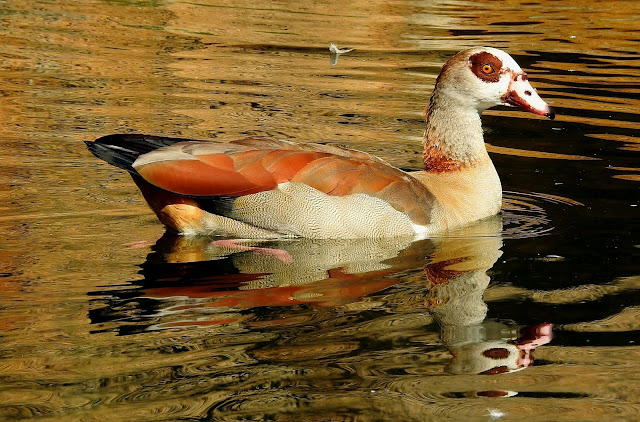This Blog contains Wildlife and Bird Photos from Walks, Safaris, Birding Trips and Vacations. Most of the pictures have been taken with my Nikon P900 and P950X cameras. On the right of the page are labels for each species of Bird/Animal etc. Click on a label and it will show all of the photos taken for that species. I am adding information for each species from sources like Wikipedia. To see any pictures at a large size just click on the image.
TOTAL PAGEVIEWS
TRANSLATE
Monday 19 October 2015
19-10-2015 LAKELAND, THURROCK - MALLARD (FEMALE) (Anas platyrhynchos)
19-10-2015 LAKELAND, THURROCK - EURASIAN GREAT CORMORANT (Phalacrocorax carbo)
Sunday 18 October 2015
18-10-2015 MALDON, ESSEX - MALLARD (FEMALE) (Anas platyrhynchos)
3-11-2015 GANDIA LA VITAL - HOUSE SPARROW (FEMALE) (Passer domesticus)
18-10-2015 MALDON, ESSEX - MUTE SWAN (JUVENILE) (Cygnus olor)
Saturday 17 October 2015
14-10-2015 VALENCIA BIOPARC - EGYPTIAN GOOSE (Alopochen aegyptiaca)
Friday 16 October 2015
14-10-2015 VALENCIA BIOPARC - AFRICAN BLACK DUCK (Anas sparsa)
Thursday 15 October 2015
14-10-2015 VALENCIA BIOPARC - YELLOW BILLED STORK (Mycteria ibis)
14-10-2015 VALENCIA BIOPARC - GREY HERON (Ardea cinerea)
19-10-2015 LAKELAND, THURROCK - MALLARD (MALE) (Anas platyrhynchos)
The mallard (Anas platyrhynchos) is a dabbling duck that breeds throughout the temperate and subtropical Americas, Eurasia, and North Africa. Mallards live in wetlands, eat water plants and small animals, and prefer to congregate in flocks of varying sizes. Unlike many waterfowl, mallards are considered an invasive species in some regions. It is a very adaptable species, being able to live and even thrive in urban areas. This species is the main ancestor of most breeds of domestic duck, and its naturally evolved wild gene pool has been genetically polluted by the domestic and feral mallard populations.
The magnificent mallard is one of the most recognizable bird species around the world. When flying, the bird displays a purplish-blue speculum, which is outlined in white. Males of this species are particularly colorful. Breeding males have a yellow beak, dark brown chest, black and white tail as well as bright green head and neck. They exhibit a white ring at the base of their neck. In addition, the sides of breeding males and most of their wings are gray. On the other hand, the plumage of female mallards and non-breeding males is less vivid and colorful. The overall plumage of female mallards is spotted with tan and brown patches, and the head is a lighter tan, showing dark bands near the crown and eyes. Females have orange-colored beaks, covered with dark spots. Females and non-breeding males generally look alike, though the latter have yellowish beaks.
Wednesday 14 October 2015
14-10-2015 VALENCIA BIOPARC - SPOTTED THICK NEE (Burhinus capensis)
Monday 12 October 2015
1-10-2015 MONTE CORONA, VALENCIA - HOUSE SPARROW (FEMALE) (Passer domesticus)
Sunday 11 October 2015
11-10-2015 VILLALONGA RESERVOIR, VALENCIA - GREEN SANDPIPER (Tringa ochropus)
Friday 9 October 2015
19-3-2015 JURONG, SINGAPORE - CATTLE EGRET (Bubulcus ibis)
Thursday 8 October 2015
19-3-2015 JURONG, SINGAPORE - EURASIAN GREAT CORMORANT (Phalacrocorax carbo)
Sunday 4 October 2015
4-10-2015 VILLALONGA RESERVOIR, VALENCIA - GREEN SANDPIPER (Tringa ochropus)
Saturday 3 October 2015
3-10-2015 MONTE CORONA - DISCRETE CHAPERON MOTH (Cymbalophora pudica)
Friday 2 October 2015
2-10-2015 RIVER JUCAR, VALENCIA - LITTLE EGRET (Egretta garzetta)
Thursday 1 October 2015
2-10-2015 RIVER JUCAR, VALENCIA - CLOUDED YELLOW BUTTERFLY (Colias croceus)
Colias croceus, clouded yellow, is a small butterfly of the family Pieridae, the yellows and whites.
Colias croceus is one of the most widespread species in Europe. The common clouded yellow's breeding range is North Africa and southern Europe and eastwards through Turkey into the Middle East, but it occurs throughout much of Europe as a summer migrant, in good years individuals reaching Scandinavia. In Asia, its range extends into central Siberia in the north and barely into India in the south; it is not found in Central Asia.
This species is primarily an immigrant to the UK, originating from southern Europe and northern Africa. In the UK they can be seen on the south coast almost every year in varying numbers, and regularly breed there. Occurrence in the rest of the UK varies considerably from year to year, but they are increasingly observed as far north as Dumfries and Galloway. It has also been recorded in Ireland from the Raven, Co. Wexford, to Belfast, Co. Down.
A truly migratory European butterfly, this species is famous for occasional mass migrations and subsequent breeding, which are often referred to in the United Kingdom as "clouded yellow years". Notable clouded yellow years include 1877, 1947, 1983, 1992, 1994, 1996 and 2000.

%20(Anas%20platyrhynchos)%2010.jpg)
%2010.jpg)
%2011.jpg)
%2012.jpg)
%2014.jpg)
%20(Anas%20platyrhynchos)%2010.jpg)
%20(Passer%20domesticus)%2011.jpg)
%20(Passer%20domesticus)%2010.jpg)
%20(Cygnus%20olor)%2010.jpg)
%20(Cygnus%20olor)%2011.jpg)
%20(Cygnus%20olor)%2012.jpg)
%20(Cygnus%20olor)%2014.jpg)








%2010.jpg)
%2011.jpg)
%2012.jpg)
%2014.jpg)





%20(Anas%20platyrhynchos)%2010.jpg)
%20(Anas%20platyrhynchos)%2011.jpg)








%2010.jpg)
%209.jpg)
%2010.jpg)


%2010.jpg)
%2010.jpg)
%2011.jpg)
%2012.jpg)